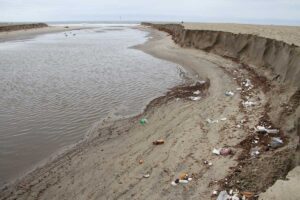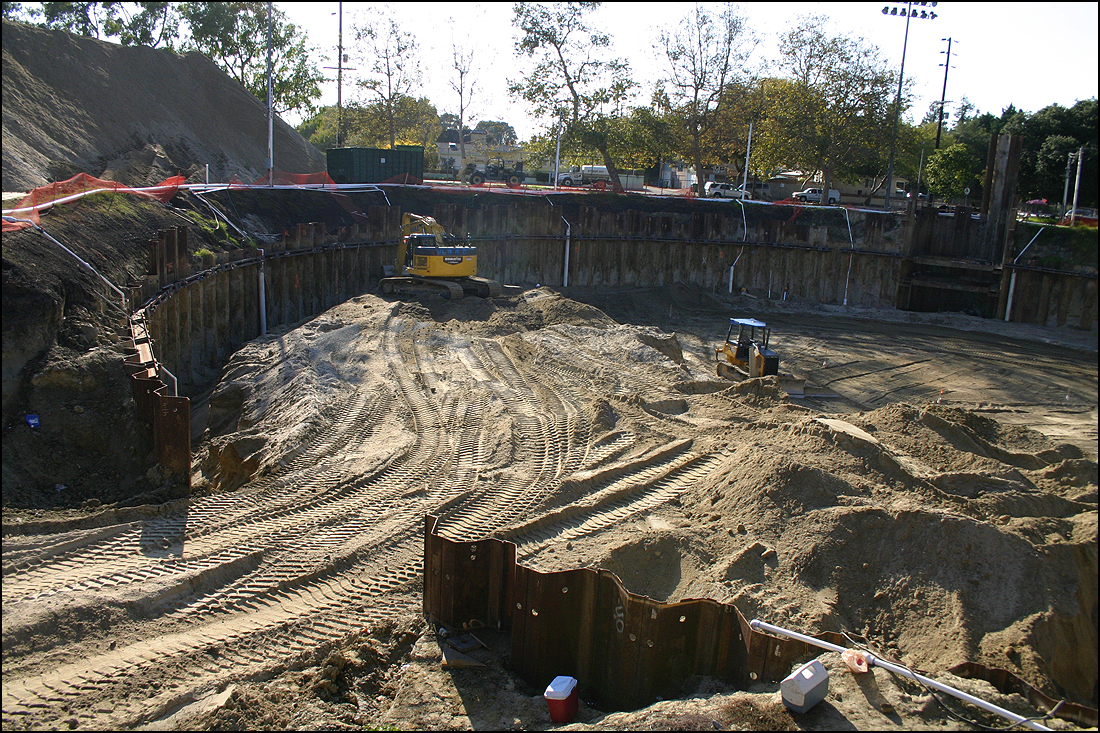CITYWIDE — Some of you may have forgotten what those big drops of water draining from the sky are called.
It's not the world ending. Come out from your bunkers. It's called rain (R-A-I-N) and your grandparents can tell you all about it.
We needed a good drenching — all of Southern California did — but Santa Monica needed other places, like the Santa Monica Mountains, to get some too.

As of Friday evening, Downtown Los Angeles received 2.28 inches of rain from Thursday's and Friday's early morning storms with more to come, said National Weather Service meteorologist Kathy Hoxsie. The area hasn't seen a storm that brought in even an inch of rain since March of 2011, she said.
In Santa Monica the rain total as of Friday at 6 p.m. was 1.68 inches.
Last year was one of the driest in recorded history for the L.A.-area. In response, Gov. Jerry Brown declared an official drought and asked, along with City Hall, for a 20 percent reduction in water usage. Code Compliance announced earlier this year that its officers would be cracking down on landscape-related water violations.
City officials are watching the rain in the city by the sea but they're also keeping an eye on the rainfall up in the Santa Monica Mountains. Most of our local water supply, from which City Hall draws 80 percent of its water, comes from mountain runoff. The rest is bought from the Metropolitan Water District, which draws its water from the Colorado River and Northern California.
As of Friday morning Topanga Canyon had already gotten 2.53 inches of rain — good news for City Hall, which depends on 13 to 14 inches annually in the mountains to meet our needs, said Water Resource Manager Gil Borboa. The mountains could get up to 4 inches by the time these storms pass, Hoxsie said.
Still, given the drought, City Hall is playing from behind.
"We've seen groundwater levels drop and certainly not replenish as much as they have in past years because we haven't had the rain," Borboa said. "We are still very vigilant about our groundwater and being very careful about how we manage it."
While most of our water comes from the mountains, the rain in the city is helpful too, he said.
"Whatever falls on the greenscapes throughout the city, to the extent that the sprinkler systems are turned off, that certainly helps with conservation," Borboa said. "People won't use as much water because they don't have their systems on to keep their yards green."
At single-family homes, he said, more than half of the water is used outdoors. Apartments and commercial properties use about 5 to 10 percent of their water outdoors.
City Hall blasted out automated phone calls to 6,000 single-family homes on Thursday and Friday reminding them to turn off sprinklers, said Watershed Section Supervisor Neal Shapiro. The move could save hundreds of thousands of gallons of water, he said.
After a soaking like this one, Borboa said, residents can leave the sprinklers off for a week, barring a heat wave.
When they do need to water again the rain will have stocked some residents' personal collections. Since 2010, City Hall has given out 385 rebates to residents for installing rain barrels and cisterns that collect 50 to 80 gallons of water, said Kim O'Cain a sustainability analyst with City Hall.
Because we are getting hammered with rain this week, rather than getting small doses over a couple months, those barrels will likely fill and overflow but, she said, this directs the water toward the gardens rather than the streets, cutting down on polluted runoff.
Residents aren't the only ones filling up. Since 1997, City Hall has required new development and substantial remodel projects to capture the first three-quarters inch of rain with cisterns.

Below the Main Library is a 200,000-gallon cistern that supplies the gardens with rainwater, O'Cain said.
Community Corporation of Santa Monica, the city's largest affordable housing provider, has a 13,000-gallon cistern at a multi-family building on 26th Street and Broadway, Shapiro said.
Water collected by the cistern at the new Pico Library, scheduled to open in April, will be used for toilet and urinal water, he said.
After a bad year for rainfall, Borboa said, this week's showers are welcome but far from enough.
"Just like the rest of the state, we'd like people to continue to conserve," he said. "You've seen all this rain, and it's very helpful and very beneficial, but don't forget about general water conservation practices."
dave@www.smdp.com









